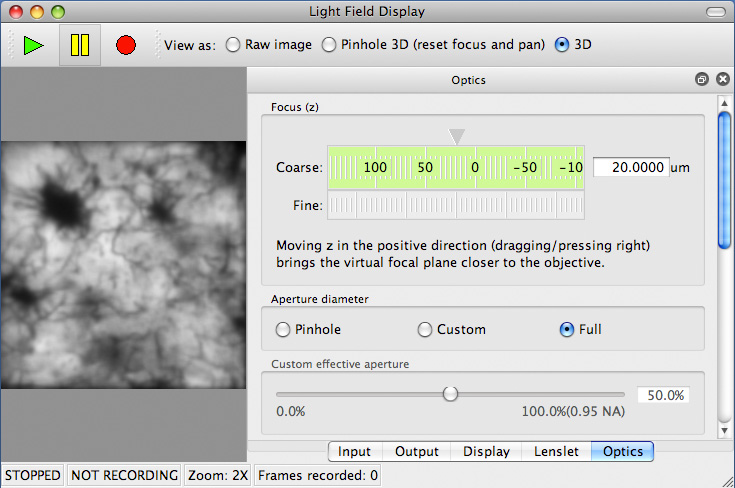LFDisplay is an open-source, cross-platform, GPU-accelerated software package
for real-time viewing of
microscope light
fields. When used in conjunction with a light field microscope (LFM) such
as the one pictured at left above designed by Logan Grosenick and Todd
Anderson, it allows the user to interactively explore a specimen under the
microscope through the use of virtual tilting and refocusing. This gives the
user a three-dimensional feel of the specimen normally not available through
the use of ordinary optical microscopy. To see a movie of LFDisplay in action,
look at the April 8, 2007 article in our
light field micrograph archive. For more information, consult the
documentation (also linked below).
LFDisplay uses the graphics processing unit (GPU) found on everyday personal
computers to perform real-time light field rendering and refocusing. The input
light field is loaded into the GPU and processed using shaders (part of the
OpenGL 2.0 specifications). It currently supports streaming raw light field
images from a QImaging Retiga 4000R camera, as well as loading pre-recorded
light field images from disk. Running in the latter mode, it can be used to
view any light field stored as a 2D image in the format described in Ren Ng's
2005 technical report on the light field camera.
However, LFDisplay's user
interface is customized for microscopy.

